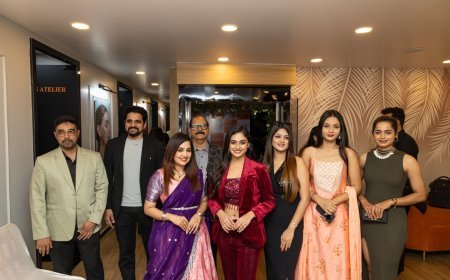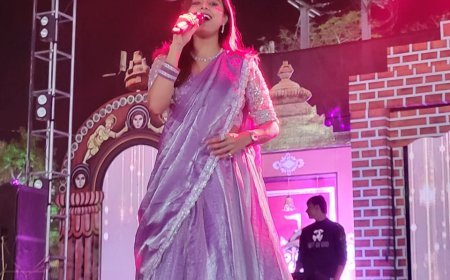Think Positive About Women's Dressing Sense: Embracing Autonomy and Diversity

By- Sanjay Pattnayak
Think Positive About Women's Dressing Sense: Embracing Autonomy and Diversity
Society has long been preoccupied with the way women dress, often subjecting them to stereotypes and judgments that oversimplify their choices. This scrutiny reflects a long-standing cultural narrative, rooted in patriarchy, that suggests women's attire is primarily meant to appeal to men. However, this perspective is not only misguided but also harmful. To truly advance as a society, we must embrace a more nuanced and positive outlook on women's dressing sense, understanding it as a multifaceted form of self-expression, personal choice, and empowerment.
Challenging the Stereotype: Women Don’t Dress for Men
The assumption that women dress "sexy" or provocatively solely for male attention is a simplification that neglects the complexity of human motivation. Research shows that clothing choices are influenced by a variety of factors including personal style, comfort, cultural identity, and even mood. A woman wearing a short dress or a fitted outfit isn’t necessarily seeking attention; she might feel good in it, find it practical, or simply enjoy that style. To assert otherwise is to ignore her autonomy and individuality, suggesting that her choices are determined by a need for male approval.
Empowerment Through Choice
Women today exercise their right to dress in a way that aligns with their identity and values, and this is, in itself, a powerful act of autonomy. Fashion can be a tool of empowerment, allowing women to reclaim control over their bodies and image. Just as men freely make sartorial choices that reflect their personality, women should be afforded the same freedom. The ability to choose how one presents oneself is a form of empowerment that transcends gender.
Whether a woman chooses to dress conservatively or provocatively, it is ultimately her decision, and it reflects her individuality. Clothing is an extension of who we are, and for women, it can be a celebration of self-worth and confidence. Rather than viewing certain styles as an invitation or a signal, we should acknowledge that each woman’s style is a unique expression of herself, deserving of respect and understanding.
Fashion as Self-Expression
Just as artists use a canvas to express themselves, individuals often use fashion to communicate their personality, tastes, and even beliefs. For some women, a daring outfit might represent confidence and freedom; for others, modest attire might symbolize tradition or cultural values. Either way, these choices are personal and often deeply meaningful. When we limit our perception of a woman's attire to the male gaze, we reduce her style to something superficial, ignoring the personal significance and self-expression it embodies.
The Harm of Judging Women Based on Their Attire
When women are criticized or judged for their choice of clothing, it leads to several damaging social practices. Slut-shaming, for instance, arises from the assumption that a woman’s clothing indicates her moral character or sexual behavior. This attitude is not only baseless but also harmful, as it perpetuates gender stereotypes and stigmatizes women for their choices.
Victim-blaming is another harmful consequence of this mindset. When a woman is seen as responsible for attracting unwanted attention simply because of her attire, it deflects accountability from those who engage in inappropriate or harmful behavior. This narrative not only restricts women’s freedom but also perpetuates a culture where harassment and violence are excused. Dressing in any style should not affect a woman’s right to feel safe and respected.
Reframing Our Perspective on Women’s Dressing Sense
If we are to build a society that truly respects individual freedoms, we must shift our thinking about women’s attire. Instead of scrutinizing or categorizing women based on what they wear, we should adopt a mindset that celebrates their freedom of expression. Here are a few ways we can shift towards a more positive perspective:
1. Respect Individuality: Recognize that each woman has her own unique preferences, cultural influences, and values that shape her style. Her choices are personal, not an invitation for others’ judgment.
2. Avoid Assumptions: Refrain from assuming that a woman’s clothing choices are meant to communicate something about her character or intentions. Whether she dresses modestly or boldly, it reflects her identity—not a message to others.
3. Promote Body Positivity: Support the notion that all individuals, regardless of gender, have the right to feel comfortable in their bodies. Positive reinforcement of body confidence can create a culture where people feel free to be themselves without fear of criticism.
4. Encourage Empowerment Through Fashion: VIew fashion as a medium for self-expression and empowerment, regardless of societal pressures. Women, like men, should be free to use fashion as a tool to explore and assert their identities.
Moving Towards a More Inclusive Society
The way forward is to foster an environment that respects and celebrates diversity in clothing and self-expression. Society must recognize that personal style is just that—personal. When we view a woman's attire with respect rather than judgment, we contribute to a more inclusive world that embraces the individuality and freedom of each person.
Positive thinking about women’s dressing sense means acknowledging that each choice reflects a unique combination of personality, preference, culture, and mood. It’s a move towards understanding and celebrating the diversity of human experience rather than limiting it to antiquated assumptions. Let us strive to create a society where women, and all individuals, feel empowered to dress in ways that make them feel confident, comfortable, and authentically themselves.









































